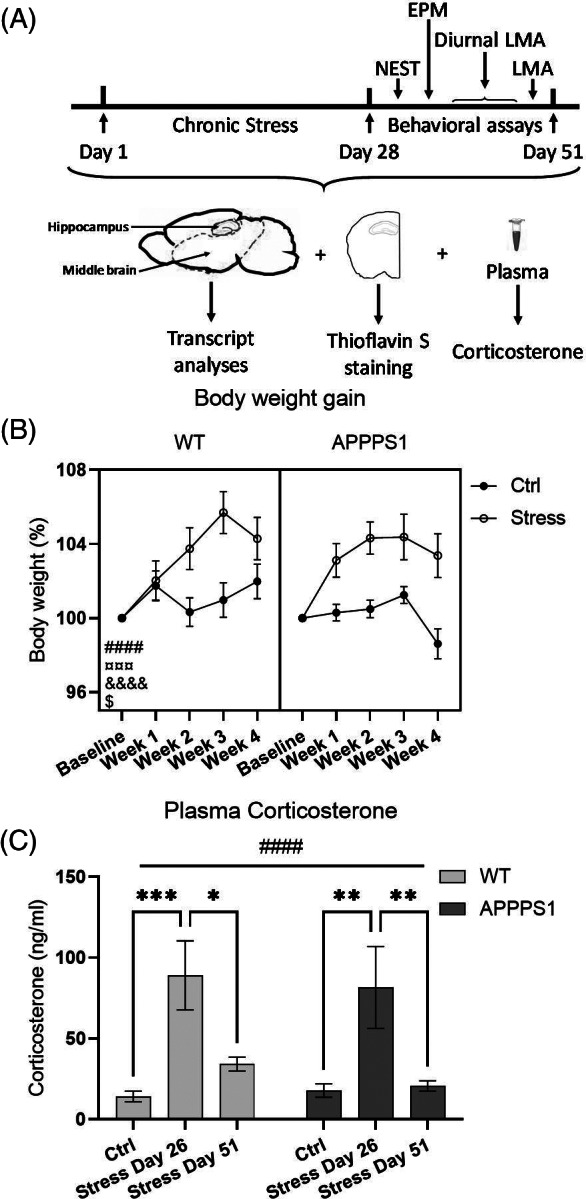FIGURE 1.

Chronic stress activates the hypothalamic–pituitary–adrenal (HPA) axis and increase body weight in WT and APPPS1 mice. (A) Schematic illustration of the experimental setup. Mice were subjected to 28 days of chronic stress followed by 23 days of behavioral assays and euthanization on day 51. (B) Weight gain was significantly affected by time (p < 0.0001, ####), stress (p = 0.0004, ¤¤¤), time × genotype (p = 0.0140, $), time × stress (p < 0.0001, &&&&) but not by genotype × stress. Three‐way ANOVA with repeated measures was used for statistical analysis. (C) Plasma was sampled on day 26 (ZT4) and day 51 (ZT5‐6) to analyze plasma corticosterone levels and the analysis showed a significant main effect of day (p < 0.0001, ####). Both APPPS1‐stress and WT‐Stress showed significantly elevations of plasma corticosterone on day 26 compared with APPPS1‐Ctrl (p = 0.0052, **) and WT‐Ctrl (p = 0.0008, ***), respectively. On Day 51, plasma corticosterone return to Ctrl levels in APPPS1‐stress and WT‐Stress mice. Statistical analysis was performed using two‐way ANOVA. Both graphs represent n = 13/group. Data represents mean ± SEM
